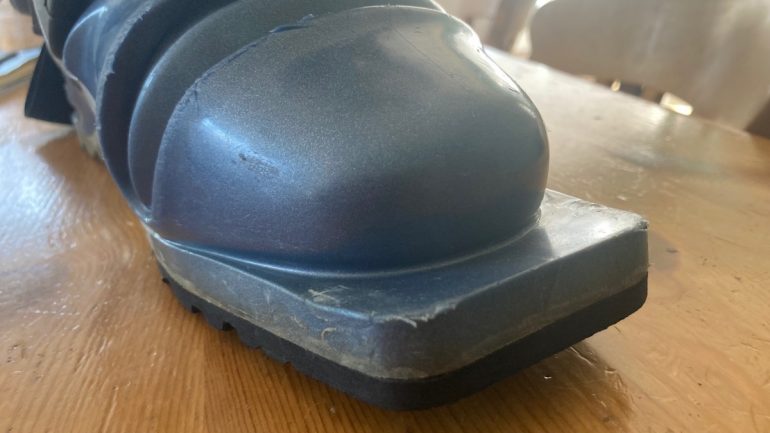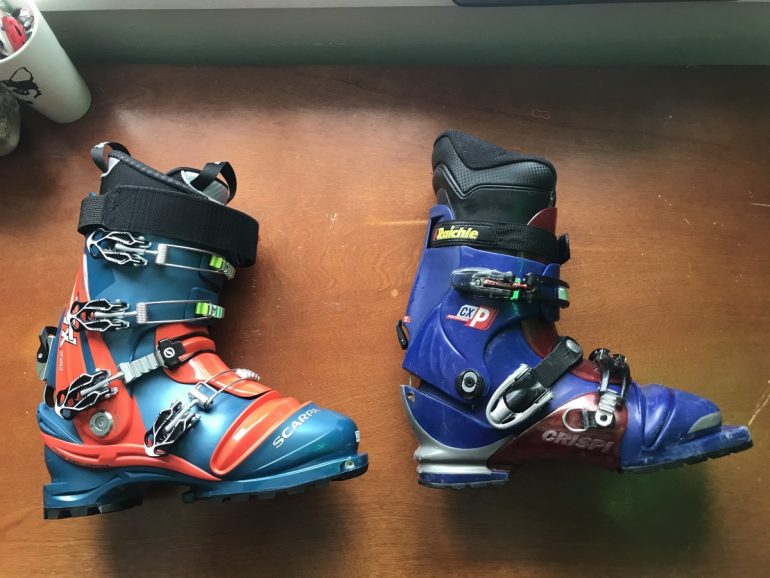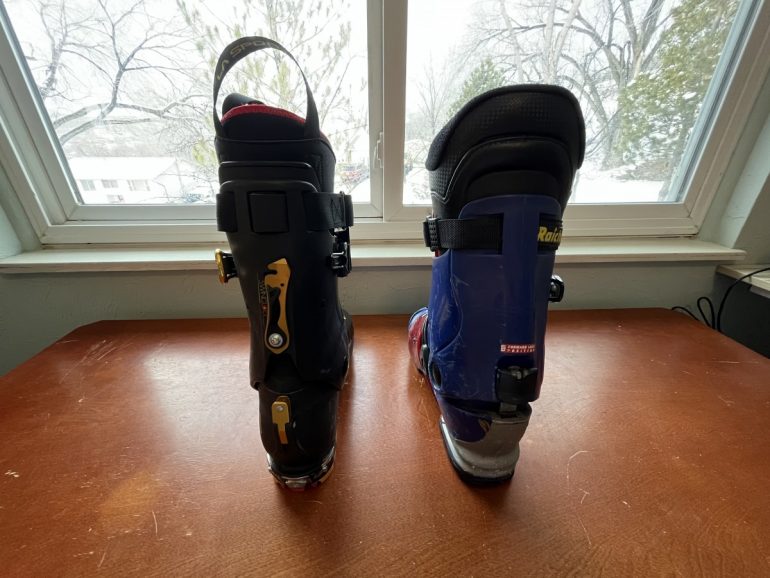
Maybe not so elegant, but functional it in its time: the 75mm duckbill norm.
Freewheel Life podcast relayed the news sending Tele Friends a twitter: the three major tele boot manufacturers have dropped 75mm boots from their lineup. Yea, even Scarpa, which accounts for 95% of tele boots sold in the US, announced they would no longer manufacture 75mm boots.
While many are stamping their Birkenstocks in frustration at the abandonment of one of the longest-running standards in the ski world, the podcast’s focus was on the range of opportunities for tele boot technology.
Speaking to the inevitability of this move, Taylor Johnson (@teletay), General Manager of Freeheel Life (one of the largest tele-specific shops in the US), pointed out that NTN has been well over 50% of the market share for over a decade now. Discussing the future of Scott boots in telemark, he raised the interesting question of production decisions, “When was the last 75mm boot molded?” He postulated that in the case of Scott, the last injection of plastic into a 75mm boot mold could have been several years ago, and this year’s announcement is simply letting everyone know, “Hey, we’re out of these boots now.”
Hopefully, the significance of all three boot manufacturers announcing the death of 75mm in the same model year points to new boot development on the horizon.
What boot would make the most sense as a new addition to the current selection of tele boots? My argument is for a “down-country” / “rugged ski mo” boot that provides premium uphill performance with rapid ski/walk mode transition and descending performance on par with a plus kilo boots such as the La Sportiva Skorpius, Scarpa F1, Dynafit TLT.

Could a new downcountry tele boot mimic the svelte lines of modern skimo boots? (Crispi tele boot on the left, La Spo Skorpius on the right.)
The advantages of rapid, simplified transitions and overall touring efficiency that once made tele the gear of choice for exploring beyond the resort were abandoned as tele boot development pursued resort-oriented free ride performance. While Scarpa’s TX Pros provided a level of control and confidence I had not previously experienced in tele skiing, the limitations of their touring performance were the lead balloon to the otherwise brilliant package I demoed last winter. I loved the promise of the lightweight, powerful, customizable control of 22D Lynx binding and versatility of the Voile Vector BC skis. But the TX Pros‘ prohibitive range of motion and weight had me looking back over my shoulder every time I headed up the skin track and left my magic plastic origami La Sportiva Skorpius boots behind.

New(ish) tech v. old school cool. The Scarpa TX Pro is obviously a much beefier boot than my well-worn, 2nd hand Crispi CxP. The instep buckles of the Scarps are one of their trademark features, said to provide a more secure tele flex.
There are three principal areas where AT boots have advanced over the past decade as tele development as ossified:
Range of Motion: The ROM on most tele boots is such a vague theoretical concept that is rarely listed, but the existence of the Maestrale/TX Pro homebrew hybrid points to a need for this concept. Ditching the inherent friction of a sliding lock mechanism for the ski/walk mode in favor of the catch & hooks systems that have become standard for modern touring boots would be a vast improvement.
Shell weight: Boots in the “plus kilo” 1000-1200g window seem to hit the sweet spot of being efficient on the way up (and across), while providing enough control to descend with confidence and leave enough gas in the tank for more laps. 1700g boots are overkill for casual touring and tend to limit your appetite to “One and Done.”
Rapid transition buckles: The streamlined design of the buckling system on the Skoripus works without snagging on pant cuffs or requiring re-adjustment for an effective walk mode. This eliminates frustrating hunched over moments, out of breath, and fumbling with a fiddly system of buckles and wires.

The Swing Lock mechanism of the La Sportiva Skorpius (left) is simple & elegant, and eliminates the friction imposed by sliding bar lock mechanisms.
Is there a large enough tele market to justify the cost of developing a new boot? Combining the basic advances AT boots have made over the past decade would leverage the advantages of a free heel binding to reduce transition times further and maximize the experience of moderately pitched, rolling terrain. The terrain that favors tele equipment is also more appealing to a broader swath of users in the beginner to intermediate skill level who don’t care so much about “shredding the gnar” as taking a pleasant walk in the woods leading to some equally satisfying turns. The sort of touring where the most important question is, “what did everyone bring for lunch?”
Perhaps the next tele touring boot comes with a charcuterie/trail snacks subscription service?
Aaron Mattix grew up in Kansas and wrote a report on snowboarding in seventh grade. His first time to attempt snowboarding was in 2012, and soon switched over to skis for backcountry exploration near his home in Rifle, CO. From snow covered alleys to steeps and low angle meadows, he loves it all. In the summer, he owns and operates Gumption Trail Works, building mountain bike singletrack and the occasional sweet jump.
